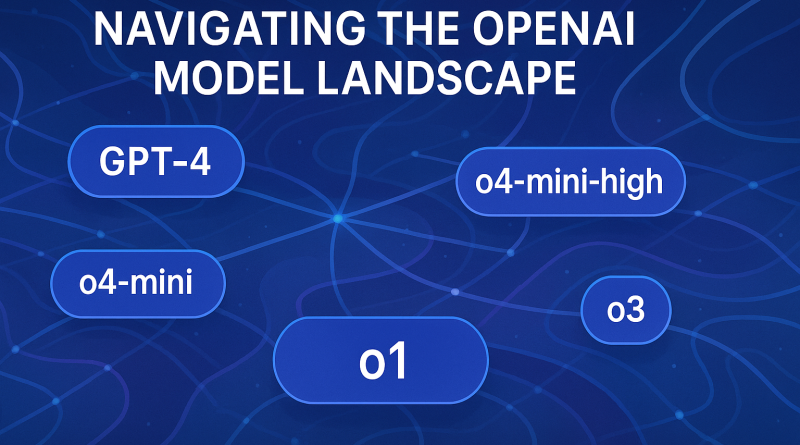OpenAI Models Explained: Which One to Choose?
OpenAI’s suite of powerful language models offers a diverse range of capabilities, but knowing which model to deploy for a specific task can sometimes feel like navigating a complex map. Recently, community discussions and official OpenAI guidance have shed more light on the optimal uses for each variant, helping users maximize efficiency and effectiveness. This post aims to synthesize these insights, offering a clear guide to selecting the best OpenAI model for your needs.
For Broad, High-Level Tasks & Creative Content:
- GPT-4: This remains a powerhouse for tasks requiring nuanced understanding, in-depth reasoning, and high-quality content generation. It excels at:
- Optimizing long-form content.
- Brainstorming and ideation.
- Drafting emails and other basic, efficient work.
- Tasks demanding advanced reasoning and creativity, such as writing creative content or facilitating complex user communication.
- Collaborative projects requiring a central, intelligent hub.
For Speed and Efficiency in Technical & Simpler Tasks:
- o4-mini: This model is geared towards rapid execution of less complex technical queries. It’s a strong choice for:
- Quick information retrieval on basic STEM-related questions.
- Simple programming tasks.
- Visual reasoning where speed is a priority.
- General assistance with relatively straightforward tasks.
- o4-mini-high: When a bit more precision is needed for technical work, but you still want to maintain good speed, this model shines. Consider it for:
- More detailed and demanding technical tasks.
- Advanced coding assistance.
- In-depth mathematical or scientific explanations.
- Tasks where higher accuracy is crucial.
For Complex, Multi-Step Reasoning & Specialized Applications:
- o3: This model is positioned for intricate, multi-layered tasks that demand robust analytical capabilities. Its strengths lie in:
- Complex tasks with many dependent stages.
- Strategic planning and detailed analysis.
- Extensive and complex coding projects.
- Advanced mathematical, scientific, or visual reasoning challenges.
For Cutting-Edge, Complex Inference (Potentially “Pro” Use Cases):
- o1 (Pro Mode): Described as being specialized for complex inference, this model appears to be targeted at the most demanding tasks that require a deep level of understanding and reasoning to arrive at a conclusion. This could include:
- High-stakes decision-making processes.
- Interpreting and synthesizing complex data to provide insightful results.
- Potentially, cutting-edge research and development applications.
Official Perspectives:
Recent information from OpenAI and reports on their documentation largely align with these user observations, emphasizing a tiered approach to model selection. Newer “o-series” models (like o3 and o4-mini) are often highlighted for their reasoning capabilities, particularly in step-by-step problem-solving and tasks requiring logical thinking and tool use. GPT models, including variants of GPT-4, are often recommended for general-purpose tasks with strong instruction-following.
For instance, official guidance suggests GPT-4o (an “omni” model) for tasks like content summarization, brainstorming, and email drafting, while more specialized reasoning models are preferred for deep, multi-stage problem-solving.
Making Your Choice:
When selecting an OpenAI model, consider the following:
- Complexity of the Task: Is it a simple query, a creative writing piece, a multi-step technical problem, or a complex inference challenge?
- Need for Reasoning: Does the task require deep logical reasoning and step-by-step analysis?
- Speed and Cost: Are you optimizing for the fastest response, or is the depth and quality of the output more critical? Different models come with different performance profiles and associated costs.
- Creative vs. Technical: Is the primary goal creative content generation or solving a technical problem?
By understanding the distinct strengths of each model, users can make more informed decisions, leading to better outcomes, optimized resource use, and a more effective application of OpenAI’s powerful technology. As OpenAI continues to evolve its offerings, staying updated on the latest guidance will be key to harnessing the full potential of these advanced AI tools.
